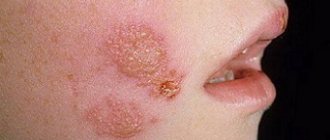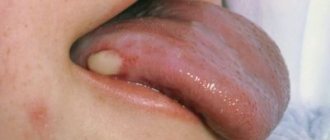Ophthalmomycosis is an eye infection caused by mold and yeast-like fungi. The disease is most often accompanied by inflammation of the cornea and conjunctiva - the cornea and mucous membranes of the eye. However, in addition to fungal conjunctivitis and keratitis, pathogenic fungi can also cause the development of blepharitis, dacryocystitis and other infectious diseases of the visual organ. In rare cases, patients may even experience intraocular infection and orbital damage.
It should be noted that fungal eye diseases occupy a significant part in the structure of ophthalmological pathology. They have a long course, respond poorly to therapeutic measures and often cause a permanent decrease in visual acuity (for example, clouding of the cornea after fungal keratitis).
What is eye fungus?
It is believed that this type of eye disease is quite rare, but the number of fungal organisms that provoke the disease is quite large.
Today, there are more than 50 types of fungus that can affect the eyes in this way .
Often the fungus is introduced into damaged areas of the eyeball: this happens with injuries of various types. Sometimes the fungus begins to affect the eye, moving from other diseased areas.
For example, with fungal skin diseases that are localized on the face, the disease can spread to the mucous membrane of the eye .
In children, such diseases are more common than in adults, and this disease is much more severe in childhood . Even the most harmless saprophyte fungi, which constantly exist around a person in large numbers, can provoke inflammatory and pathogenic processes in children.
Important! Conventional therapy, which is effective in treating bacterial and infectious eye diseases, is ineffective in such cases.
Antibiotics and topical corticosteroids are usually prescribed.
Exudative ophthalmomycosis
The causative agents of this type of eye pathology are Candida albicans and aspergillus. With the development of candidiasis, so-called pseudomembranes sometimes form on the conjunctiva - films of a gray or yellowish tint, which are easily removed. With aspergillosis, papillary growths occur, ulceration of the mucous membrane or cornea occurs - in this case, mycotic keratitis is diagnosed. Aspergillosis is also sometimes confused with a stye or chalazion.
Conjunctivitis of fungal etiology has minor clinical manifestations and scanty discharge from the eyes. However, they are difficult to treat with antibiotics - this is the main danger of ophthalmomycosis. A long course of fungal conjunctivitis of the eyes can lead to deformation of the edges of the eyelids, as well as their inversion. Complications often arise in the form of inflammation of the lacrimal canaliculus, and the corneal epithelium is affected.
Types of eye fungus
The following types of fungal microorganisms can infect the mucous membrane of the eye::
- Aspergillosis . Molds that live on human skin and multiply on the mucous membrane, but in ordinary cases the organ of vision is not damaged in depth.
- Candidomycosis . Yeast-like fungi, which are found both in the environment and are present in the human body as opportunistic microflora.
- Sporotrichosis . A fungus that lives in the soil and is carried by animals, birds and people themselves.
- Actinomycosis . A form of fungus that is close in structure to anaerobic bacteria, which lives in large numbers in the human body, multiplying on the mucous membranes.
Most fungi are carried by animals and enter the human body if hygiene rules are not followed..
Our doctors who will solve your vision problems:
Fomenko Natalia Ivanovna
Chief physician of the clinic, ophthalmologist of the highest category, ophthalmic surgeon. Surgical treatment of cataracts, glaucoma and other eye diseases.
Yakovleva Yulia Valerievna Refractive surgeon, specialist in laser vision correction (LASIK, Femto-LASIK) for myopia, farsightedness and astigmatism.
You can find out the cost of a particular procedure or make an appointment at the Moscow Eye Clinic by calling in Moscow 8 (499) 322-36-36 (daily from 9:00 to 21:00) or using the ONLINE REGISTRATION FORM.
Symptoms of the disease
Regardless of the form and type of fungi, diseases caused by such microflora have the same characteristic symptoms:
- Burning and itching in the affected eyes.
- Redness , characteristic of all inflammatory processes.
- Purulent discharge of different colors (depending on the type of fungus).
- of a film on the mucous membrane .
- Copious and uncontrollable tearing .
- Painful sensations.
- Redness of the whites of the eyes.
- Whitish inclusions in the mucous membrane of the organs of vision.
- A feeling of blurred vision, the patient sees a veil and cloudiness before the eyes.
- Gradual decrease in visual acuity .
- and dense formations under the eyelid
- The appearance of ulcers and wounds on the eyelid.
Also, fungus in the eyes provokes the appearance of other ophthalmological diseases .
In this case, their treatment is carried out as an addition to the main course, but cannot be completely excluded, since against the background of a fungal disease, any other ailments can quickly become severe.
Keratoconjunctivitis
A disease caused by an adenovirus that affects the conjunctiva and cornea.
Transmitted by contact.
From the moment of infection to the onset of the disease, 7-8 days pass. It begins with headache, chills, weakness and apathy. Then there is pain in the eyes and redness of the sclera, a feeling of a foreign body inside and profuse lacrimation with mucus discharge from the lacrimal canal.
The conjunctiva turns red, small bubbles with liquid inside appear on it - a characteristic manifestation of an adenoviral infection.
With timely treatment, after 5-7 days, signs of infection disappear, with the exception of photophobia. Cloudy lesions form in the cornea. Complete healing occurs after two months.
Causes of eye fungus
With normal functioning of the immune system, a healthy person is completely protected from eye fungus. But in addition to immunity disorders, the development of diseases of this nature may be due to a number of other reasons :
- Injuries of various types (domestic, industrial, operating).
- Immunodeficiency (fungal diseases are often found in AIDS patients).
- The disease can appear with diabetes mellitus.
- Incorrect use of antibiotics in the treatment of other diseases.
- Failure to comply with the rules of hygiene and use of contact lenses (in particular, wearing such optical products for longer than the period specified by the manufacturer).
Important! The fungus is often carried with dust, so working in dusty industrial areas can also lead to this disease if special protective equipment is not used.
Diagnosis of fungal conjunctivitis
The external symptoms of various eye inflammations are quite similar. When ophthalmomycosis is detected, additional diagnostics are also carried out to identify causative agents of conjunctivitis of other etiologies: allergic, bacterial, viral. The fungal origin of the disease may most likely be indicated by a long course, as well as the use of antibiotics or glucocorticosteroids before the development of eye pathology.
To conduct the study, a scraping is taken from the conjunctiva, a drop of purulent discharge, an imprint smear and then microscopic and cytological examination is carried out, as well as bacterial inoculation on nutrient media. If necessary, a consultation with a dermatologist is scheduled to examine scrapings for pathogenic fungi from smooth skin.
Treatment
Correct and quick treatment is possible only by determining the cause of the disease and the type of fungus.
In the process of diagnosing the disease, the ophthalmologist is also interested in details regarding the patient’s intake of various medications during the appearance of fungal infections.
Information about all congenital and chronic diseases is important (such diseases can also become a factor in the appearance of fungus).
Treatment in most cases takes place on an outpatient basis, but in case of advanced disease, inpatient treatment under the supervision of doctors is possible.
Choroiditis (posterior uveitis)
This is an inflammatory process behind the choroid. The reason for its occurrence is the introduction of microbes into the capillaries.
The disease is characterized by an initial absence of symptoms. As a rule, choroiditis is discovered incidentally during an ophthalmological examination.
If the focus of inflammation is localized in the center of the choroid, characteristic signs are sometimes observed: distortion of the contours of objects, flickering and light flashes before the eyes.
In the absence of timely antibacterial therapy, retinal edema develops with microscopic hemorrhages.
Fungus on the eyelids: photo
Under normal conditions, pathogenic and opportunistic fungal microorganisms do not pose a danger to humans. But even with the slightest disturbance in the functioning of the immune system, the risk of developing fungal eye diseases increases significantly .
Risk group
The highest risk group includes all people living in rural areas, incl. workers in agriculture, feed shops, mills. This is explained by the fact that a large number of fungal pathogens live in the soil or in plants. The type of activity of such people is constantly associated with the risk of eye injury. The same risk group includes workers at weaving factories.
Children and teenagers are at risk: they spend a long time in children's groups, where they cannot always follow the rules of hygiene. In addition, young children have weak immunity.
Useful video
Useful information about fungal eye infections can be found at the following links:
Fungal infections of eye tissue should be treated as quickly as possible. Properly organized therapy helps to get rid of dangerous complications.
Author's rating
Author of the article
Alexandrova O.M.
Articles written
2100
about the author
Was the article helpful?
Rate the material on a five-point scale!
( 7 ratings, average: 4.29 out of 5)
If you have any questions or want to share your opinion or experience, write a comment below.
General information
The cornea is a relatively dense, transparent layer that protects the front, exposed surface of the eyeball. Both the shape of the cornea (it should be as flat, smooth, spherical as possible) and its transparency are of key importance, since any optical interference - turbidity, inhomogeneous inclusions, scars, etc. - distorts the normal refraction of light and/or reduces its intensity on the way to the retina inevitably affects the quality of the final visual image. Unlike some other inflammatory processes of the eye (blepharitis, conjunctivitis), which may not significantly affect visual acuity, with keratitis there is almost always a decrease in visual function. That is why it is extremely important to begin treatment as soon as possible, before irreversible scar changes form on the main optical axis of the eye.
Prevention and possible complications
The presence of fungus on the body is under the control of the immune system, but with the weakening of the body’s defenses, active reproduction begins, resulting in eye damage. The development of the disease can be prevented by preventive measures aimed at maintaining immunity:
- adhere to a healthy lifestyle;
- do not drink alcohol, cigarettes or drugs;
- proper nutrition;
- maintaining hygiene;
- walks in the open air.
In the absence of proper care and timely treatment, unpleasant consequences are possible, which will require more effort and time to combat. The following complications are possible:
- deformation and scarring of the eyelids;
- sepsis;
- loss of eyelashes;
- in rare cases, meningitis.
To avoid serious problems, treatment should be started on time. Self-medication is considered dangerous, as it aggravates an already serious condition.










